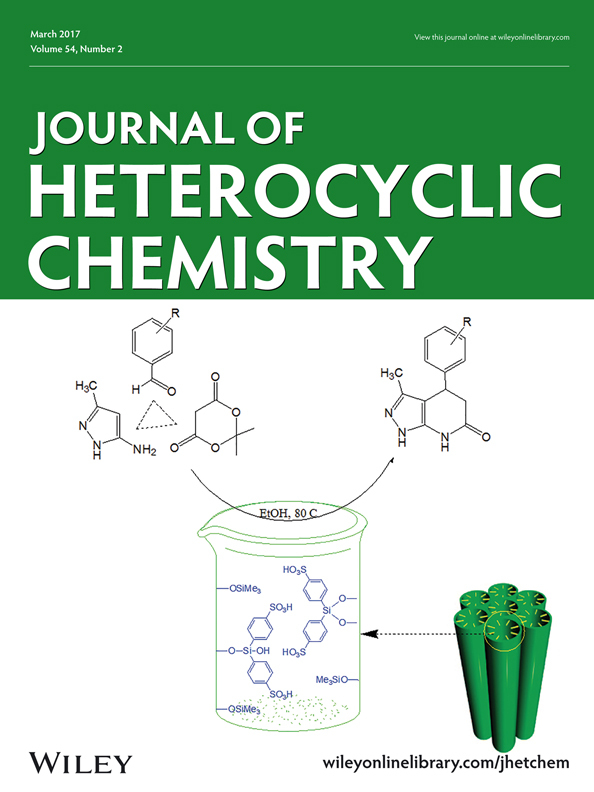An Approach to Polysubstituted Triazipines, Thiadiazoles and Thiazoles Based on Benzopyran Moiety Through The Utility of Versatile Hydrazonoyl Halides as In Vitro Monoamine Oxidase Inhibitors
Abstract
The chromene compound 1 is used as a key intermediate for synthesis of new heterocyclic compounds, and it reacted with hydrazonoyl chlorides in presence of TEA to give the amidrazone derivatives 3a, 3b, 3c, 3d, 3e, 3f, 3g, 3h, which were cyclized to the corresponding triazepines 5a, 5b, 5c, 5d, 5e, 5f, 5g, 5h on boiling with sodium ethoxide. Conversion of compound 1 to the methylthiocarbamate derivative 6 was performed through its reaction with carbon disulfide and KOH followed by treatment with methyl iodide. Compound 6 reacted with hydrazonoyl chlorides in presence of TEA to give thiadiazoles 8a, 8b, 8c, 8d, 8e, 8f, 8g. In addition, chromene 1 combined with aminodithiocarbamic acid in DMF under reflux to furnish the thiosemicarbazide derivative 9, which in turn interacted with several hydrazonoyl chlorides to give the thiazole derivatives 11a, 11b, 11c, 11d, 11e. The structures of the prepared compounds were confirmed from their spectroscopic data and elemental analysis. The synthesized compounds were tested against both monoamine oxidase (MAO)-A and MAO-B and corrected to analyses showed good inhibitory activities especially against MAO-A.




